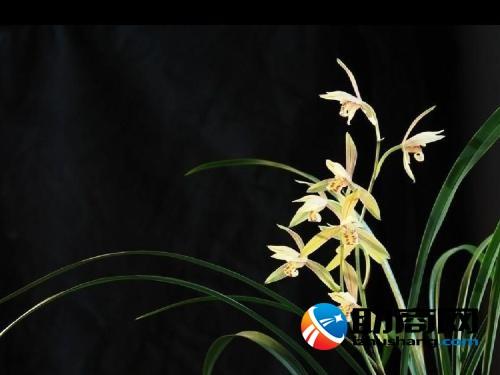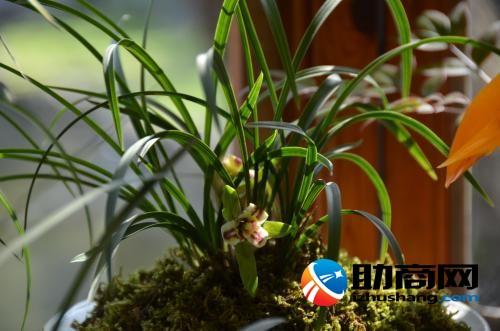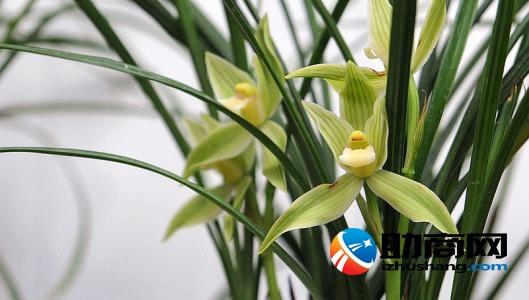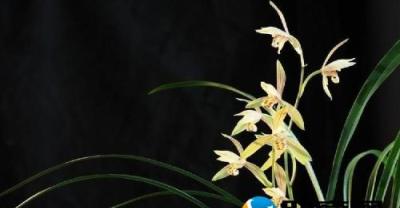How to distinguish the advantages and disadvantages of orchids and how to manage orchids
Since ancient times, orchids have been regarded as a symbol of nobility, elegance, patriotism and unswerving chastity. Orchids symbolize nobility. The orchid is simple and elegant with dignified appearance and delicate fragrance. It has always been a symbol of noble personality. "three points of planting, seven points of cultivation", this is the ancient experience of raising orchids. Maintenance is related to whether orchids are luxuriant and blooming, so it is reasonable for predecessors to attach great importance to this. The methods of conservation and management of orchids are described in detail below.

How to distinguish the advantages and disadvantages of orchids
Look at the fragrance. Orchids are not fragrant by people, and those with unturbid fragrance are the best.
Look at the second position. The whole plant is symmetrical, and the coordination of flowers and leaves is the best.
Look at the three colors. The color of the flower is pure and light green, followed by dark green, red spots on the petals and lips, red at the beginning and then green. The color of the leaves should be oily and glossy.
Look at the shoulders. The left and right side petal rising slightly is called the flying shoulder, which is the most precious; the horizontal plane spreading into "one word shoulder" is the superior species; after flowering, the two side petal gradually drooping is called falling shoulder, followed by.
Look at the valve. Orchids are dominated by petals. The lotus valve is the top grade, the plum valve is the second, and the daffodil valve is the second. The odd petal has many flowers and the butterfly petal is better.
Six, look at it. The heart is smooth, fleshy and concave into a pocket as a good breed.
Look at the tongue. It is better for the lip flap to be straight in shape and short in shape. The color on the tongue is called moss, and pure white, green, or all red is the best, followed by yellow. There are often red lines or massive erythema on the tongue, with bright colors as good, spots to form a point, a piece or character shape is better, the emergence of multiple tongues is strange.
Eight, look at the nose. The nose is small, looks elegant, and is the top grade. The appearance of a hard nose is astonishing.
Nine look at the shell. The shell is the bract, and the discerning eye can see from the bracts of "dumb grass" that those who are arranged through the top will produce good flowers. Generally, green is the best, followed by purple and red.
Ten look at the stem. The stem is clear, the length is commensurate with the flowers and leaves, thin and protruding from the leaves (commonly known as flowers out of the shelf) is better.

How to spend the winter with orchids
First, entering the house to keep warm into winter, the weather is getting colder and colder, especially and often attacked by cold currents, so orchids placed outdoors must be moved indoors to the sun in time; for example, for people living in buildings, it is better to place orchid pots in a sunny closed balcony. This orientation can receive sunlight sooner or later, which is very beneficial to the growth, budding and flowering of orchids. For overwintering orchids, the room temperature should be controlled between 5 ℃ and 15 min. If the room temperature is too low, it will not play the role of preventing cold and keeping warm. Too high will also affect the dormancy of orchids. But for winter cold orchid and ink orchid should keep the room temperature a little higher, but not more than 15 ℃. If the room temperature is too high, the flower stem grows slowly and the flower bud develops poorly, which is easy to make the formed flower bud shrink and die. For hardy orchids, a low temperature of about 0 ℃ for 4 weeks is needed to complete the function of spring dormancy and vernalization, and then spring orchids can blossom. Therefore, it is most suitable for Cymbidium to control the room temperature between 3Mel and 8 ℃.
Second, control watering "should not be dry in summer and autumn and not wet in winter and spring". This is the orchid cultivation experience summed up by our predecessors. Orchids are mostly dormant in winter, and their physiological activities almost stop. At this time, less water is needed and the basin soil is slightly moist and can survive the winter safely. If the basin soil is really dry, spray it with the same or similar water as the room temperature around noon in sunny and warm weather, so that the basin soil is slightly wet and do not flood, so as to prevent the basin soil from freezing or rotting the roots. It is best to water with rain and snow water, not with tap water just released. If no rain and snow water needs to be poured with tap water, the tap water should be dried for one or two days before it can be watered with chlorine. When watering, it should be poured from the edge of the basin, so that it gradually flows into the flower root, until the flower root is wet. Avoid watering leaves and orchid cores.
Third, fertilizer control and light-increasing orchid hibernation generally do not need fertilization. The orchid root is thick and long without whisker root, and there is symbiosis of root fungi in the root. In general, when orchids change soil and pots for one or two years, the soil contains sufficient nutrients and can not be fertilized at all in winter. However, during the growing period, Chunlan and Hanlan can spray less phosphate and potassium fertilizer on the leaves, and 1500 times 0.2% potassium dihydrogen phosphate or compound trace elements can be used. In addition, in the indoor, orchids can give more light, which light is insufficient, can be supplemented with light. If the orchid has enough light in winter, it is beneficial to the growth and flowering of the following year. At the same time, it can also improve the cold resistance of the orchid overwintering.

Fourth, timely ventilation orchids like warm and need air circulation, afraid of smoke and dust pollution. On the other hand, in the northern region, people often light stoves to keep warm indoors, and there are many fumes and dirty gases in the room. At this time, keep the orchid pot away from the stove. At the same time should be in the sunny and warm weather around noon, open the doors and windows to breathe, you can also put the pot end to the outdoor shelter to see the sun, so that the orchid plant to absorb fresh air. The orchid on the closed balcony should also open the window door to make the air circulate. When the temperature drops, you should immediately close the doors and windows and put the pot end into the room to avoid freezing damage to the orchid plant.
Fifth, to prevent diseases and insect pests, such as orchids overwintering indoors or on a closed balcony, when the temperature and humidity are slightly higher, once diseases and insect pests are found, they should be sprayed in time. Protective spraying should also be carried out at ordinary times, such as spraying basin soil, orchid plants and the environment around the basin with Bordeaux liquid, so as to prevent or reduce the occurrence of diseases and insect pests in the following year.
More fertilizer should be applied during the peak growth period of orchids, but not during dormant or weak growth periods. If excessive fertilization, the roots and leaves will be burned, resulting in irreparable losses. Orchids like circulating and pollution-free air. Orchid cultivation places should be away from gas, oil fumes, away from dusty places. Lampblack and dust are attached to the leaves, which will block the respiration of the leaves and affect the photosynthesis. Poor ventilation will attach bacteria and viruses to the leaves, endangering the growth of orchids.

- Prev

Grow orchids, teach you hand in hand, orchid ramets
Orchids growing in the wild are all divided by their own length, showing that the canopy of orchids are basically grown from one seedling to their own.
- Next

Orchid, you don't know the flower language of orchid!
Vanilla: keep chastity in predicament Violet: please believe me, eternal beauty, endless love orchid: simplicity, innocence, elegance, purity, hope, serenity.
Related
- Is the orchid suitable for indoor use? Is it good for the body?
- How to prevent the empty root of orchids?
- What to do after the crab claw orchid is withered?
- Why are the leaves of orchids always yellow? Fertilizing and watering.
- Can the root of the gentleman orchid be saved if it is rotten?
- Diagnosis and treatment of cotton-blowing beetle insects in Cymbidium
- There is a way for a gentleman's orchid to rot.
- What is the most suitable temperature and humidity for the orchid?
- How to raise a gentleman's orchid? Cultivation techniques of Cymbidium
- How to prepare the nutritive soil for the cultivation of Cymbidium

